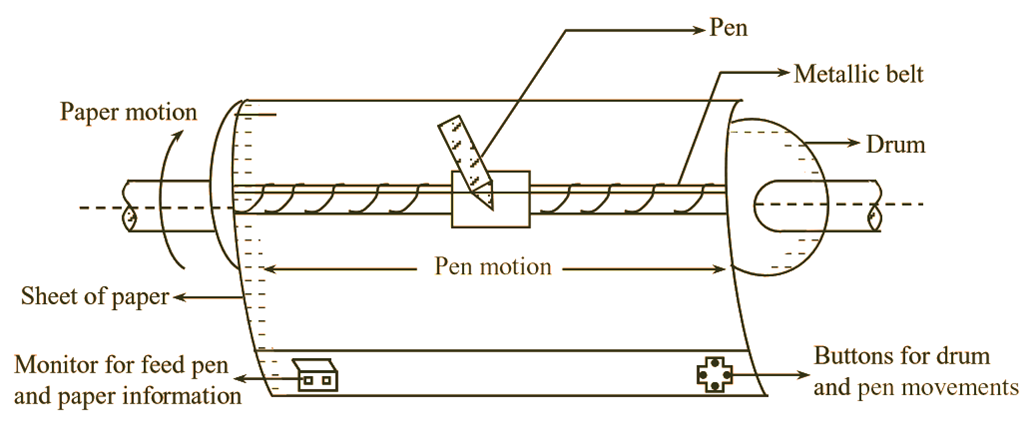A plotter is a printing device that employs vector graphics technique for printing vector graphics and is connected to a computer. It is a pen based output device used for printing bulk format graphs and maps such as engineering drawings and map constructions. They are widely used for drawing high resolution graphs.
Plotters are hard-copy printing devices. They consist of one or more pens that are used for general design work. By moving a pen across the surface of a piece of paper a pen plotter prints the output.
Drum Plotter

Fig. 1: Drum Plotter.
Drum plotters are the first output devices used for printing graphics and large engineering drawings. Generally, drum plotters are classified into two types. They are,
- External Drum plotters
- Internal Drum plotters.
In an external drum plotter, the paper that is to be plot ted is placed around its external surface. Whereas, in internal drum type plotter, the paper is placed around its internal surface. The operation of both the types of drum plotters is similar except the location of paper. The schematic representation of drum type plotter is shown in figure.
In the drum plotters, paper which is attached to a drum rotates to and fro resulting in the Y-axis motion. The pen moves in the other direction i.e., transverse direction across the X-axis. During plotting, the size of the plot may be varied due to the moment of the paper. Therefore, a special paper is used with sproket holes. Drum plotters are cheaper than flat bed plotters.
Advantages of Plotter
- They produce faster, high-resolution vector-based color art work.
- While generating graphic arts, their limitless size is one of the most important features.
- Simultaneous sampling and storage of number of input channels is possible with plotters.
Limitations of Plotter
- Plotters are confined to line art.
- They are slower than printers due to slow and precise movement of the pen.
- They require several closed lines to fill a solid region with a particular color.